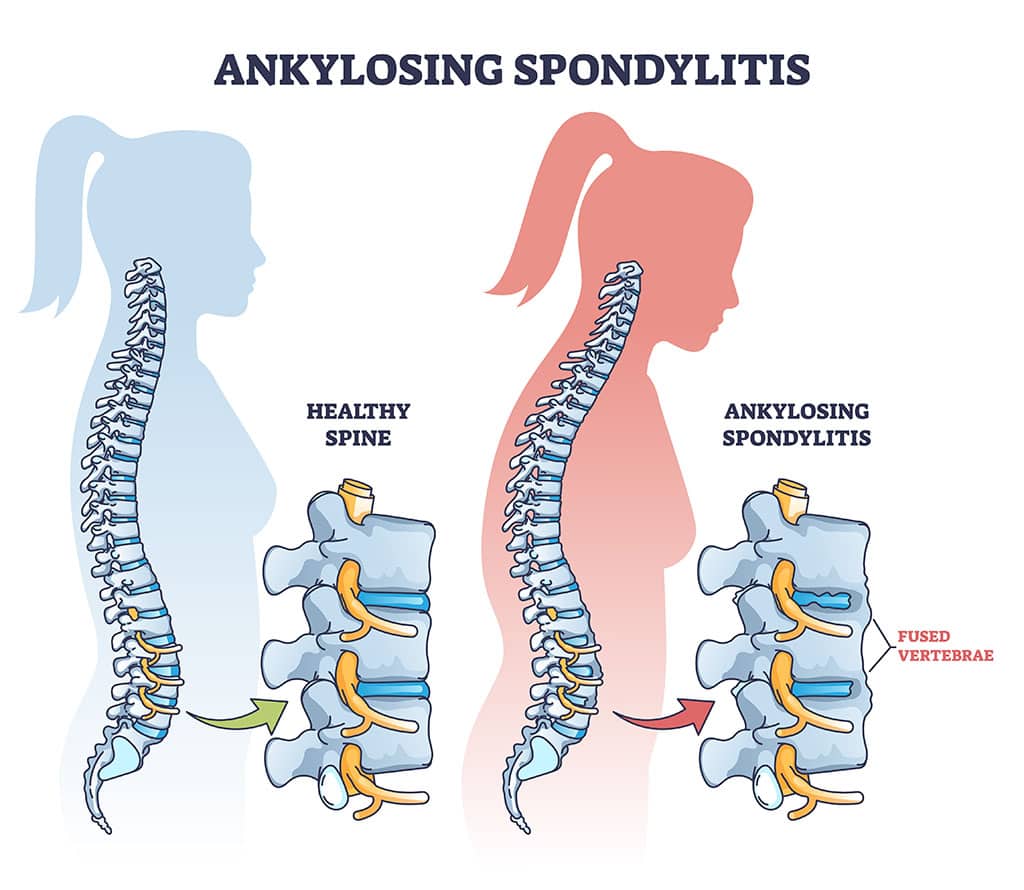What Are the 3 Most Common Symptoms of Ankylosing Spondylitis?
Following are the three main symptoms of ankylosing spondylitis:
1. Pain
Pain may be concentrated in your lower back or even buttocks. The pain may become worse if you’re inactive. It may lead to frequent nighttime awakenings.
2. Stiffness
Stiffness is notable in the mornings and improves with exercise or stretching. Often, movement or even exercise can provide some relief from discomfort.
3. Reduced Mobility
As the inflammation continues, your spine will not be as flexible. As a result, it becomes more difficult to move without pain.
The severity of these symptoms varies from person to person, and how extreme the symptoms become depends upon receiving appropriate and timely treatment to help you manage the condition.
What Are the Warning Signs of Ankylosing Spondylitis?
If you find that you’re feeling stiff in the morning and experiencing extensive back pain, you may be at risk for the condition—especially if rest does not alleviate the discomfort after many weeks.
Other symptoms may include:
- Persistent lower back pain that gradually gets worse
- Pain and stiffness that gets better with movement and exercise
- Discomfort in the hips or pelvis
- Eye inflammation
- Loss of appetite or weight loss
- Digestive issues
What Are the 4 Body Areas Affected by Ankylosing Spondylitis?
The pain for ankylosing spondylitis focuses on the lower back, and even parts of the pelvis. The four main areas affected include:
- Lower spine: This is the lumbar (lower back) region
- Sacroiliac Joints: These joints connect your spine to your pelvis. When this region is affected, you may also experience pain in your buttocks.
- Ribs: If the cartilage around the breastbone and ribs is affected, you could experience breathing difficulties.
- Hips: The condition often causes pain in the hip—and sometimes shoulder—joints.
How Is AS Treated?
AS is a chronic condition that has no cure. However, the symptoms can be adequately treated and managed, depending on their severity.
Treatment for symptoms may include:
- Medications such as NSAIDs
- Pain medications
- A healthy diet
- Cold and heat therapy
- Physical therapy
- Exercise
- TENS machine
- Psychological support
What Is the Life Expectancy of Someone With Ankylosing Spondylitis?
If the symptoms of AS are appropriately managed, the life expectancy for those with it is comparable to that of the general population. The only exceptions are those for whom the symptoms are more severe and cause more serious complications.
We Offer Relief From the Debilitating Lower Back Pain of Ankylosing Spondylitis
Your spine is the central focus of movement: The nerves that control all your body’s motions are protected by your vertebrae. When something goes wrong with your spine, it can cause pain, inflammation, and limited mobility. If not handled in a timely manner, the symptoms can get steadily worse.
We offer the most comprehensive symptom management for this condition, providing a solution that will provide relief and restore your level of functioning.
If you’ve experienced any of the symptoms listed here, contact us at 919-341-3603 to schedule an appointment.



